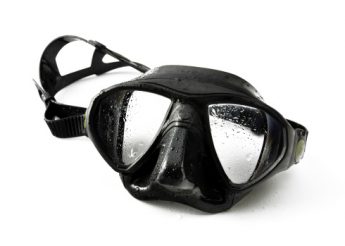Introduction
Quick Navigation
Your wetsuit isn’t the only thing that needs to fit; other equipment in your scuba diving gear also needs proper fitting. If you don’t get things that are your perfect size, you may not be as comfortable and convenient as you hoped to be. Therefore, you must write out the list of equipment you need and choose from the various sizes available, the one that suits you.
While you do that, one of the vital pieces of scuba diving equipment that needs proper fitting apart from the wetsuit is the Snorkel or Scuba Mask. It is the gear that lets you breathe properly underwater; hence, it needs to be given utmost consideration. If you buy a snorkel mask that is a bit loose, you may not breathe properly, or wearing an ill-fitting mask can cause mask squeeze and other related diving accidents.
What is a Scuba Mask Comprised Of?
If you would like a good time snorkeling, you should know the different parts of a modern mask. With this knowledge, you can make the necessary adjustments needed to ensure it is fitted before your diving session.
Ideally, a modern mask has two parts:
Outer Seal
Narrower Inner Seal.
The outer seal covers only the nose, while the inner seal covers every other place on the face except the nose. If you feel both seals touching the face, the mask isn’t fitted, and leaking is inevitable.
How to Fit a Snorkel or Scuba Mask: Step-By-Step Guide
Knowing what to do with the different parts of a scuba mask described above is important to prevent leaking and other diving accidents. Achieving an airtight seal on the face without having a tightly fitted mask is the goal here – hence, the step-by-step guide below should help.
Step 1: Accurate Face Dimensions
Getting the right fit of your snorkel mask requires you to stand in front of a mirror to find face dimensions. There are two different possibilities for each of these dimensions – Narrow or Wide Face, Wide or Close Eyes, Big or Small Nose, Space or No Space Under Nose (above the lip). These are factors that contribute to the differences in faces.
So, knowing these dimensions will help you make good decisions on the type of mask to pick. You can start by trying out the different types available, from the face to the nose level. Eventually, you will find something that fits perfectly.
P.S: Men are advised to shave before mask face dimension test.
Step 2: Fitting for Face Shape
Face dimension isn’t the only thing you need to pick the right choice for you; your face shape is another factor. Yes, there are different types of scuba masks, but you need to be careful to choose what fits your face shape.
A good way to do that is to use the straps over the top of the mask. With a mirror in front of you, pull the mask on your face without strapping around your head. The skirt is a feature of the mask that you also need to look out for here. It is the part that contacts the face. The skirt foot is where this mask feature ends on the face.
See where the skirt foot lies on your face to determine whether it is the right choice for your face or not. It shouldn’t be too close to the eyes, and it shouldn’t be so wide close to the hairline. A moderate-sized skirt is perfect.
Step 3: Conduct a Suction Test
Another impressive way to check if your scuba mask is a good fit is to conduct a suction test. It is somewhat a pre-dive experience to see how effective breathing in water would be with the mask on.
You need to strap the mask over your face, but not over the head yet – ensure that this mask aligns with your face in the right way. Slowly, press the mask and inhale a small amount of air through your nose. After you inhale, suction the air to your face and release your hands from the strap.
If the mask suctions to the face after you stopped inhaling, then it is fitted. A successful suction test even means you can move around for a little while without the mask falling from your face.
Step 4: Strap to Use
If you are convinced the mask passed all the various tests you’ve put it through to ensure it is the proper fitting, then you can do what’s necessary – strapping. Ensuring that a mask stays strapped on your head is a must. It should come with an airtight fit but with a light strap pressure.
Carefully strap so that it sits on the back of your head. It shouldn’t rest on the ears. Overall, make sure the strap isn’t too tight that it makes you uncomfortable.
Step 5: Feature a Snorkel
With the mask on correctly, you can now feature a snorkel in your mouth. However, it would be best if you were watchful of the seal – what happens when the snorkel is added. Does it change the shape of your face? Does the seal break? If it remains in good condition, then it is ready to be fully used for diving.
See how to get fit for scuba diving here.
How Can You Tell If a Snorkel Mask is Leaking?
Several things could cause a snorkel mask to be ill-fitting when in use. Some of them include smiling, laughing, or squinting. Wrinkles and lines are formed close to your nose doing any of these things, allowing water to get in. That is how you tell if your snorkel mask is leaking.
When that happens, you can either pull your face to the side or downwards. Whatever way you decide to try out, the wrinkle should straighten out.
Conclusion
Learning how to fit a snorkel or scuba mask is another survival skill you need as a scuba diver. It would be best if you did this to prevent leaking or any diving-related accidents caused by ill-fitting masks.

